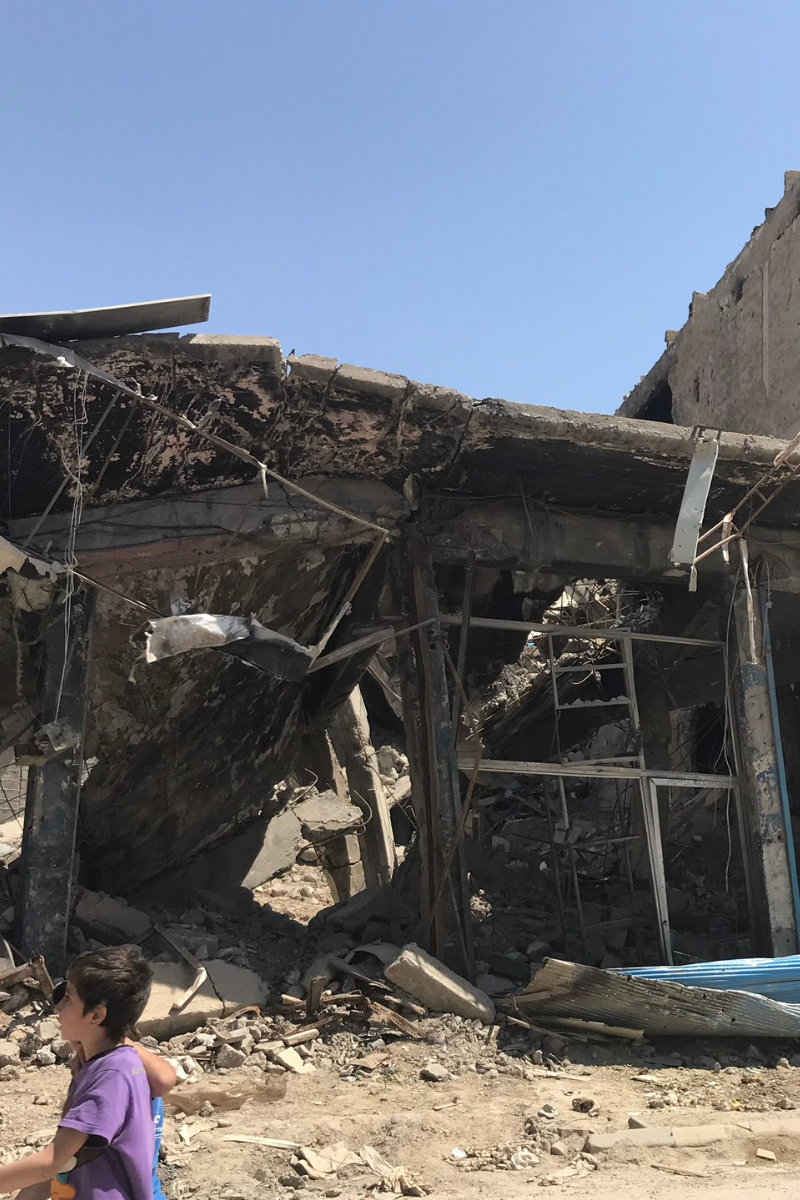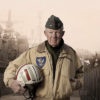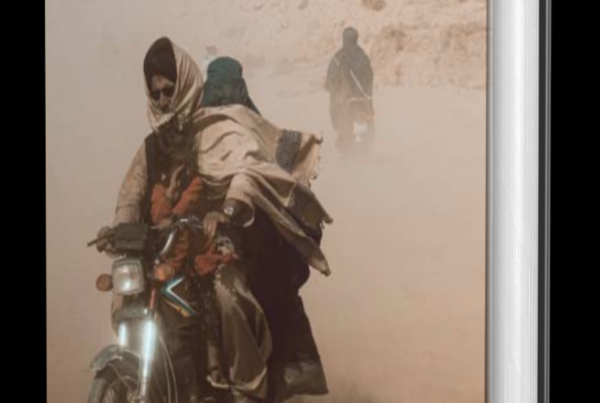There is little light in scouring blistered war zones for the remains of murdered Americans. But for retired U.S. Air Force Colonel Jim Klingmeyer, it is a pledge from which he cannot walk away.
“I still stay in touch with the families. I made a promise that I would keep looking,” says Jim, a U.S. military veteran and founder of tailored Hostage Recovery and security consulting firm S.C. Global Ventures.
It has been eight years after those they loved most in the world were marched off into the Syrian wasteland of war and beheaded in vile videos for the world to see. The names of journalists such as James Foley and Steven Sotoloff were splayed across social media and news screens as much of the globe abhorred what these terrorists – the relatively strange and medieval new outfit known as ISIS or the Islamic State – had done to these innocent hostages in and around their so-called caliphate capital of Raqqa, Syria.
We saw, heard, and read about these brave souls who lost their lives to these monsters. The Geneva Conventions mean nothing to groups like ISIS. However, what we didn’t hear was that those bodies we knew to be viciously slain on-camera were never found, never returned home, and never able to rest in peace.
The city, tucked into the northeast bank of the Euphrates River, was under bitter siege for over five years, suffering starvation and persistent shelling, shattered and dehumanized. It wasn’t until early 2019 that the U.S.-led coalition and Syrian ground troops known as the SDF bombed the ISIS occupiers from a self-styled government into an insurgency on the run. But since then, attention to the ISIS war has faded. Memories dull, and information becomes harder to come by. Only Jim continues to go in and out of the war-wracked Raqqa; it is a mission that is as melancholy as it is dangerous.

“The security situation is one hurdle, you have Turkey, and you have the (Syrian) regime to worry about – that they can take you into a hole somewhere, and you’ll never be seen again,” he notes. “And you still have the Russians (allied with the regime). So, I don’t stay in any one place for more than a night. It is exhausting, you are always aware, and you never really get to decompress.”
The second big challenge is funding the independent operation. Currently, Jim’s focus is solely on the search in Raqqa, Syria. There are six cases on the docket: Five Americans and one New Zealand woman.
“I’ve got guys on retainer with me inside Raqqa. Their whole job is to look for folks’ remains,” Jim explains. “They go out and get tips here and there. I’ve been out there with them, and so much of it is digging and digging, going through the kill houses and the mass graves. It is ghoulish work, but these Americans are out there each and every day doing it. The families want the remains so they can bury them.”
And although now relegated to insurgency status and no longer controlling vast swaths of land, ISIS continues to wage frequent attacks against the SDF forces and Bashar al-Assad’s Syrian Army. Over the border in Iraq, the militant band continues to carry out deadly, low-level onslaughts. As a result, the United States continues to have a small presence around the Raqqa region, launching airstrikes against ISIS operatives and infrastructure.
Yet as for the slaughtered Americans, it is something I cannot forget. Jim cannot forget. Their families cannot forget, and everyday Americans shouldn’t either.
Now 58, Jim was just 17 when he joined the U.S. Army to escape his challenging childhood, growing up in Orlando, Florida, with a single mom.
“I was just an infantry guy, nothing sexy. I wasn’t a Special Forces guy, just a regular soldier. But the big thing was I got to get away and get three meals a day,” he recalls, adding that he spent just a couple of years in the Army before going to college and transitioning as a Commissioned Officer to the U.S. Air Force.
Here, Jim trained to work as an intelligence officer specializing in personnel recovery in Afghanistan before working as a military contractor across Asia and Africa.
“I had the opportunity to (prepare) for what to do if military members were taken behind enemy lines. Luckily, it never happened,” Jim underscores. “But at the same time, I had the training and a skill set that I knew would be important once I got out.”
After retiring from the Air Force as a Colonel in 2015, Jim continued recovery investigations before setting up his own firm in 2017.
Along with the searing videos of Foley and Sotloff, ISIS released footage depicting the beheadings of British citizens David Haines and Alan Henning from August to October 2014. The following January, the group dispersed a video showing the decapitated body of Japanese citizen Haruna Yukawa and the beheading of fellow Japanese citizen Kenji Goto. Then, around February 7, 2015, the family of missing U.S. aid worker Kayla Mueller received an email from ISIS operatives confirming her death inside Syria.
There have been some small slivers of justice.
In September, a now 37-year-old militant fighter for ISIS, Alexander Kotey, who was part of a contingent of four members with British accents thus dubbed the “Beatles,” was sentenced to life behind bars for his gruesome role in the kidnapping and subsequent deaths of four American citizens, along with British and Japanese nationals.
Kotey pled guilty to all eight charges pending against him in the United States: one count of conspiracy to commit hostage-taking resulting in death; four counts of hostage-taking resulting in the deaths of the four Americans (James Wright Foley, Kayla Jean Mueller, Steven Joel Sotloff and Peter Edward Kassig); one count of conspiracy to murder U.S. citizens outside of the United States; one count of conspiracy to provide material support or resources to terrorists resulting in the deaths of U.S., British and Japanese nationals; and one count of conspiracy to provide material support or resources to a designated foreign terrorist organization resulting in the deaths of U.S., British and Japanese nationals.
“Kotey specifically participated in the seizure, detention and hostage negotiations for four American citizens – James Wright Foley, Kayla Jean Mueller, Steven Joel Sotloff and Peter Edward Kassig – each of whom died as hostages in ISIS custody,” the court records state. “Kotey and two other ISIS members supervised the terrorist organization’s jails and detention facilities at which the hostages were held and were responsible for transferring hostages between detention facilities. Kotey and his co-conspirators engaged in a prolonged pattern of physical and psychological violence against hostages that was meant as an effort to control the hostages. These actions were also intended to compel the victims’ family members and the U.S. government to pay large monetary ransoms for their release, in addition to compelling the U.S. government to agree to other terms and conditions for the victims’ return.”
Jim, who sat through the painful court case, had been hopeful some indication of where the Americans were buried might surface. But to no avail.
“They (Beatles) maintain to the very end they don’t know where the victims are, which doesn’t make any sense, even though they were an integral part of (the victims) everyday life,” he laments. “They still claim they have no knowledge of any involvement of what happened to all these hostages.”
Still, much like the U.S. military ethos, Jim can’t turn away until those innocent individuals are brought home. There has been no luck so far, but Jim emphasizes that dozens of unexcavated mass graves exist.
“I wish I had a big, sexy story to tell you, but I don’t. So, I am still going back; I am still looking. Every day goes by where we eliminate the areas we know they are not,” he asserts.
Further, Jim’s team has a DNA sequencing machine with a mobile DNA test kit that can be used to make a match. And in the process, he hopes to provide some closure to the many Syrians who have also lost those they hold near and dear to the grim clutches of terrorists. I know from my own experience trekking through the decimated Raqqa that life does return, even in the most cadaverous of places. Only it is all in slow motion, with dark voids yet to be stitched up.
“It has been eight years, so I think many Syrian families now realize what has happened to their loved ones. But with forensic analysis, we can help make a match,” Jim says with a quiet confidence.
He takes a slow, rugged breath.
“I’ve met with these (American) families. It is heartbreaking. But I made a promise,” Jim reminds me.











